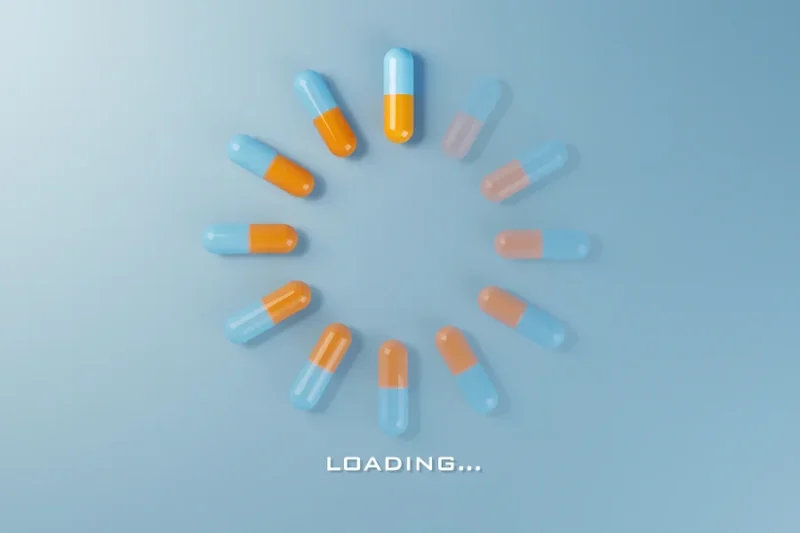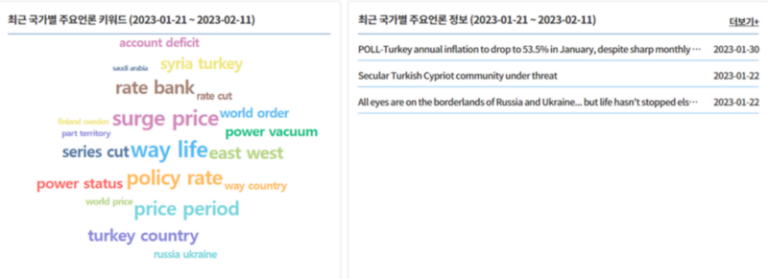[해외 DS] 인공지능으로 발견한 새로운 종류의 항생제
새로운 항생제 물질, 쥐 실험에서 효과 확인 화학적 구조를 분해해 논리적 설명 가능한 AI 구현 정체된 항생제 내성 문제 해결 가능성 제시
[해외DS]는 해외 유수의 데이터 사이언스 전문지들에서 전하는 업계 전문가들의 의견을 담았습니다. 저희 데이터 사이언스 경영 연구소 (GIAI R&D Korea)에서 영어 원문 공개 조건으로 콘텐츠 제휴가 진행 중입니다.

항생제 내성은 전 세계적으로 인류 건강을 위협하는 가장 큰 요인 중 하나다. 2019년 약 127만 사망자의 직접적인 원인으로 항생제 내성이 지목됐으며, 약 500만 명이 넘는 사망에 관여했다고 조사된 바가 있다. 이 문제는 코로나19 팬데믹 동안 더욱 악화했다. 공중보건 및 의료 전문가들은 코로나19 사태가 2년 이상 지속되면서 부적절한 항생제 사용이 만연해지고, 많은 국가에서 항균제 내성이 상당히 악화하고 있다고 지적했다. 동시에 제약 업계는 항생제 시장이 수익성이 높지 않기 때문에 항생제 개발에 충분한 관심을 보이지 않고 있다. 그 결과 새로운 종류의 항생제는 수십 년 동안 개발되지 못했다.
광범위한 화학적 탐색 공간을 효율적으로 분석해
최근 연구에 따르면 인공지능을 사용하여 새로운 종류의 항생제 후보를 효율적으로 찾을 수 있다고 한다. 매사추세츠 공과대학교와 하버드대학교의 브로드연구소 제임스 콜린스 연구팀은 딥러닝으로 알려진 인공지능을 사용하여 수백만 개의 화합물에서 항생제의 활성을 선별해 냈다. 그런 다음 쥐를 대상으로 283개의 상위 화합물을 테스트하여 메티실린 내성 황색포도상구균(MRSA)과 반코마이신 내성 장구균(가장 완강하고 죽이기 어려운 병원균)에 효과가 있는 몇 가지 화합물을 발견했다. 이해할 수 없는 ‘블랙박스’로 작동하는 일반적인 AI 모델과 달리, 이 모델은 추론 과정을 따라 그 이면의 생화학적 역학을 이해하는 것이 가능했다.
AI를 활용한 이번 연구 결과는 생산성과 설명력 측면에서 시사하는 바가 크다. 먼저 기존 연구의 접근 방식과는 비교할 수 없을 만큼 연구 주기가 짧아졌다. 기존 연구의 항생제 발견 주기를 생각해 보면, 새로운 항생제를 발견하는 데는 약 12년이 걸리고 임상 후보를 발견하는 데는 3년에서 6년이 걸렸다. 그런 다음 1상, 2상, 3상 임상시험으로 전환해야 하는데 이마저도 적지 않은 시간이 소요된다. 하지만 이제 기계 덕분에 그 시간을 크게 단축할 수 있게 됐다. 연구자는 3~6년을 기다릴 필요 없이 몇 시간 만에 수천, 수십만 개의 전임상 후보 물질을 발견할 수 있는 것이다.
딥러닝 모델의 신뢰성 향상, 데이터의 화학적 특성을 활용
또한 연구진은 ‘설명 가능한 AI(eXplainable AI, 이하 XAI)’를 구현했다. 콜린스 연구팀은 그래프 신경망이 각 분자의 원자와 화학적 결합에 포함된 정보를 기반으로 예측하므로 항생제 예측 점수가 높은 화합물은 그 점수를 결정하는 화학적 하위 구조(‘근거’)를 포함하고 있다는 가설을 세웠다고 한다. 모델의 추론 과정을 조각(하위 구조)으로 분해하고 각 조각이 추론의 어떤 부분을 설명하는지를 알 수 있게 되면 연구 재현성이 높아진다. 연구 재현성이 높은 모델의 결괏값은 과학적 지식으로써 그 가치도 덩달아 높아진다. 따라서 식별된 하위 구조를 모델의 입력으로 사용하면 높은 예측 점수에 직접적으로 기인하기 때문에 정리된 화학적 하위 구조를 기반으로 높은 예측력뿐만 아니라 높은 예측력을 반복적으로 재현할 수 있는 모형화가 가능하게 됐다.
물론 새로운 종류의 항생제를 임상 약물로 전환하기 위해서는 큰 노력이 필요하다. 체계적인 독성 연구와 임상시험 전 IND(Investigational New Drug, 임상시험용 신약) 연구를 거쳐야 한다. 미국 식품의약국(FDA)에서는 잠재적으로 가능성이 높은 약물이 임상시험의 첫 단계인 1상 임상시험으로 전환할 수 있는지 평가하기 위해 이러한 연구를 수행하도록 요구하고 있다. 한편 FDA는 최근 개발자, 제조업체, 규제 기관, 학술 단체 및 기타 이해관계자 간의 의약품 개발 프로세스 전반에 걸친 AI 및 머신러닝 사용에 대한 논의를 촉진하기 위한 문서도 발표했다. 미생물학 및 항생제 분야에서 AI를 활용하는 이 새로운 연구 분야는 이번 연구 결과로 기대 효과에 부응할 것으로 전망된다.
New Class of Antibiotics Discovered Using AI
A deep-learning algorithm helped identify new compounds that are effective against antibiotic-resistant infections in mice, opening the door to AI-guided drug discovery
Antibiotic resistance is among the biggest global threats to human health. It was directly responsible for an estimated 1.27 million deaths in 2019 and contributed to nearly five million more. The problem only got worse during the COVID pandemic. And no new classes of antibiotics have been developed for decades.
Now researchers report that they have used artificial intelligence to discover a new class of antibiotic candidates. A team at the laboratory of James Collins of the Broad Institute of the Massachusetts Institute of Technology and Harvard University used a type of AI known as deep learning to screen millions of compounds for antibiotic activity. They then tested 283 promising compounds in mice and found several that were effective against methicillin-resistant Staphylococcus aureus (MRSA) and vancomycin-resistant enterococci—some of the most stubbornly hard-to-kill pathogens. Unlike a typical AI model, which operates as an inscrutable “black box,” it was possible to follow this model’s reasoning and understand the biochemistry behind it.
The development builds on previous research by this group and others, including work by César de la Fuente, an assistant professor in the department of psychiatry at the University of Pennsylvania’s Perelman School of Medicine, and his colleagues. Scientific American spoke with de la Fuente about the significance of the new study for using AI to help guide the development of new antibiotics.
[An edited transcript of the interview follows.]
How significant is this finding of a new class of antibiotics using AI?
I’m very excited about this new work at the Collins Lab—I think this is a great next breakthrough. It’s an area of research that was not even a field until five years ago. It’s an extremely exciting and very emerging area of work, where the main goal is to use AI for antibiotic discovery and antibiotic design. My own laboratory has been working toward this for the past half-decade. In this study, the researchers used deep learning to try to discover a new type of antibiotic. They also implemented notions of “explainable AI,” which is interesting, because when we think about machine learning and deep learning, we think of them as black boxes. So I think it’s interesting to start incorporating explainability into some of the models we’re building that apply AI to biology and chemistry. The authors were able to find a couple of compounds that seemed to reduce infection in mouse models, so that’s always exciting.
What advantage does AI have over humans in being able to screen and identify new antibiotic compounds?
AI and machines in general can systematically and very rapidly mine structures or any sort of dataset that you give them. If you think about the traditional antibiotic discovery pipeline, it takes around 12 years to discover a new antibiotic, and it takes between three and six years to discover any clinical candidates. Then you have to transition them to phase I, phase II and phase III clinical trials. Now, with machines, we’ve been able to accelerate that. In my and my colleagues’ own work, for example, we can discover in a matter of hours thousands or hundreds of thousands of preclinical candidates instead of having to wait three to six years. I think AI in general has enabled that. And I think another example of that is this work by the Collins Lab—where, by using deep learning in this case, the team has been able to sort through millions of chemical compounds to identify a couple that seemed promising. That would be very hard to do manually.
What are the next steps needed in order to translate this new class of antibiotics into a clinical drug?
There’s still a gap there. You will need systematic toxicity studies and then pre-IND [investigational new drug] studies. The U.S. Food and Drug Administration requires you do these studies to assess whether your potentially exciting drug could transition into phase I clinical trials, which is the first stage in any clinical trial. So those different steps still need to take place. But again, I think this is another very exciting advance in this really emerging area of using AI in the field of microbiology and antibiotics. The dream we have is that hopefully someday AI will create antibiotics that can save lives.
The compounds identified in this new study were effective at killing microbes such as MRSA in mice, right?
Yes, they showed that in two mouse models, which is interesting. Whenever you have mouse infection data, that’s always a lot more exciting—it shows those compounds were actually able to reduce infection in realistic mouse models.
As another example of using AI, we recently mined the genomes and proteomes of extinct organisms in my own lab, and we were able to identify a number of clinical antibiotic candidates.
Why is it important that the AI model is “explainable”?
I think it’s important if we are to think about AI as an engineering discipline someday. In engineering, you’re always able to take apart the different pieces that constitute some sort of structure, and you understand what each piece is doing. But in the case of AI, and particularly deep learning, because it’s a black box, we don’t know what happens in the middle. It’s very difficult to re-create what happened in order to give us compound X or Y or solution X or Y. So beginning to dig into the black box to see what’s actually happening in each of those steps is a critical step for us to be able to turn AI into an engineering discipline. A first step in the right direction is to use explainable AI in order to try to comprehend what the machine is actually doing. It becomes less of a black box—perhaps a gray box.







